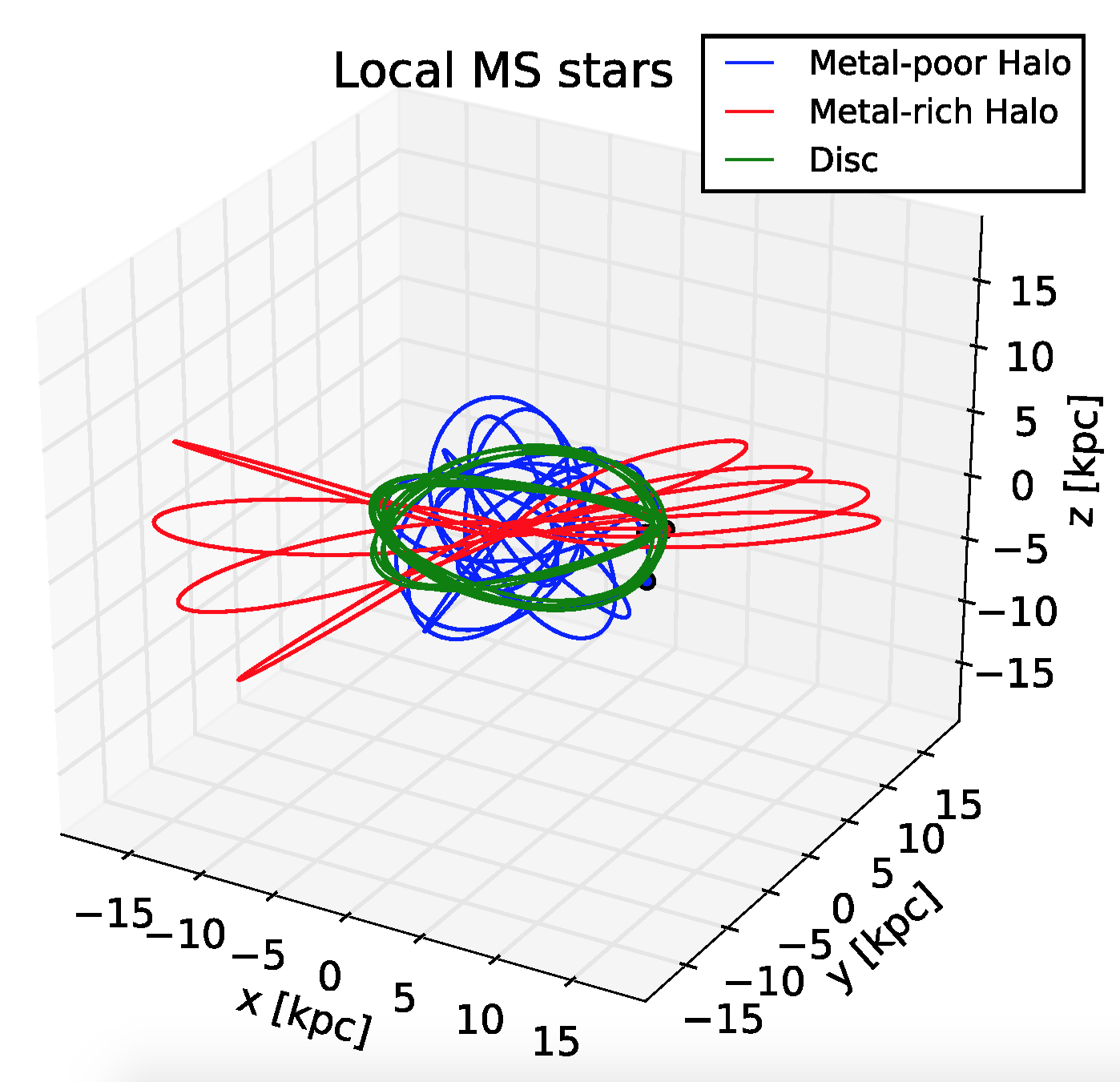John Carlos Baez on Nostr: The last time a big galaxy crashed into ours was between 8 and 11 billion years ago. ...
The last time a big galaxy crashed into ours was between 8 and 11 billion years ago. It added about 50 billion solar masses to our galaxy. And its remains, still visible today, are called the Sausage.
Why the funny name? It's the red thing in the picture! This picture shows orbits of various typical stars in the Milky Way. The z direction is at right angles to the galactic disk. There are 3 quite different kinds of stars:
• The green orbit is a star in the galactic disk, like our Sun.
• The blue orbit is a star in the galactic halo. These stars tend to be very old: over 12 billion years old.
• The red orbit is a star in the Sausage. It moves back and forth in a very narrow orbit!
We learned about the Sausage only after 2014, when an EU-run satellite called Gaia began carefully measuring the velocities of many stars in the Milky Way. Many dwarf galaxies that collided with the Milky Way were already known. But the Sausage was hard to detect until we got good at watching stars move by repeatedly measuring their position.
You see, redshifts are only good for telling if something is moving toward or away from you. Stars in the Sausage are moving back and forth from our point of view. Gaia accurately measured the position of a billion astronomical objects, measuring each 70 times in its five-year life! So it could actually see a bunch of stars slowly moving across the sky.
For more on the Sausage:
https://people.ast.cam.ac.uk/~vasily/gaia_sausage/info.html

Why the funny name? It's the red thing in the picture! This picture shows orbits of various typical stars in the Milky Way. The z direction is at right angles to the galactic disk. There are 3 quite different kinds of stars:
• The green orbit is a star in the galactic disk, like our Sun.
• The blue orbit is a star in the galactic halo. These stars tend to be very old: over 12 billion years old.
• The red orbit is a star in the Sausage. It moves back and forth in a very narrow orbit!
We learned about the Sausage only after 2014, when an EU-run satellite called Gaia began carefully measuring the velocities of many stars in the Milky Way. Many dwarf galaxies that collided with the Milky Way were already known. But the Sausage was hard to detect until we got good at watching stars move by repeatedly measuring their position.
You see, redshifts are only good for telling if something is moving toward or away from you. Stars in the Sausage are moving back and forth from our point of view. Gaia accurately measured the position of a billion astronomical objects, measuring each 70 times in its five-year life! So it could actually see a bunch of stars slowly moving across the sky.
For more on the Sausage:
https://people.ast.cam.ac.uk/~vasily/gaia_sausage/info.html
